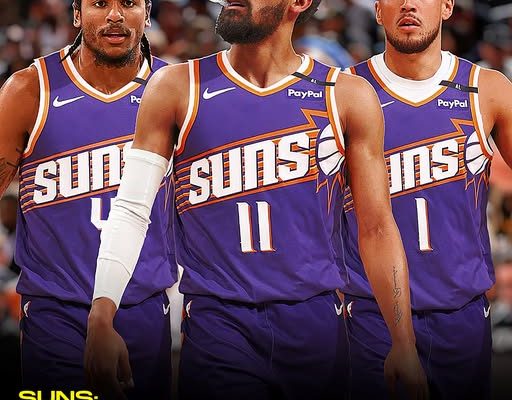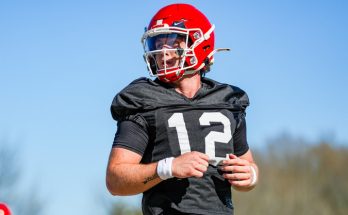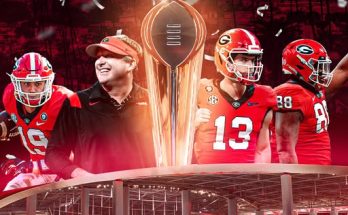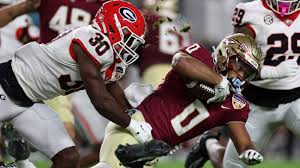The Phoenix Suns have long been a team known for their offensive firepower and ability to put points on the board in a hurry, but the potential acquisition of Trae Young would be more than just another scoring boost—it would represent a complete offensive reimagining, a strategic reshaping that could reestablish the Suns as a dominant force in the Western Conference. The idea of pairing one of the league’s premier playmakers with the likes of Devin Booker, Jalen Green, Dillon Brooks, and Mark Williams isn’t just a pipe dream for basketball romantics; it’s a tangible blueprint for a more balanced, more dangerous, and ultimately more championship-ready team. For the Suns, this wouldn’t just be about adding talent; it would be about constructing a system where every piece complements the other in ways that make opponents miserable to guard and punish them relentlessly on both ends of the floor.
Trae Young’s arrival in Phoenix would fundamentally alter the way the Suns operate offensively. Young is not just an elite scorer—though his deep three-point range, pull-up shooting, and ability to finish with crafty floaters make him lethal—he’s also one of the best facilitators in the NBA. His court vision is elite, the kind of instinctive passing that turns a good possession into a great one. With Young orchestrating the offense, Devin Booker would no longer be tasked with initiating as often, freeing him to focus more on what he does best: scoring at all three levels, creating mismatches, and applying relentless pressure on defenses. This shift in responsibility would not only conserve Booker’s energy but also increase his efficiency, as he would benefit from more catch-and-shoot opportunities and cleaner isolation looks against defenses already stretched thin by Young’s gravitational pull.
The inclusion of Jalen Green in this hypothetical Suns lineup adds another layer of dynamism. Green’s explosive first step, body control, and ability to attack closeouts would flourish alongside a point guard who thrives at creating driving lanes. With Young drawing defensive attention far beyond the arc, Green would often find himself with either a smaller defender scrambling to recover or a big forced to step out uncomfortably on the perimeter. In those scenarios, Green’s slashing ability could be devastating, turning spot-up opportunities into rim assaults and increasing Phoenix’s offensive unpredictability. This kind of secondary scoring punch would ensure that even if Booker or Young have an off night, the Suns could still put up big numbers.
Defensively, the addition of Dillon Brooks addresses what has often been the Suns’ Achilles heel in recent seasons: perimeter defense. Brooks, for all the criticism he has sometimes received for his shot selection, is a tenacious, physical defender who relishes the challenge of guarding the opponent’s best wing scorer. He would be the glue guy on defense, capable of covering for both Young and Booker’s defensive shortcomings by taking on the most difficult assignments night after night. His ability to set a tone physically would give Phoenix a much-needed edge, making them harder to push around in high-stakes games. Brooks wouldn’t just be a defender; he would be the emotional engine that keeps the team’s defensive intensity high, especially in playoff settings where possessions become precious and effort can swing a series.
Mark Williams would round out this hypothetical starting five as the perfect rim-protecting anchor for a team built around offensive firepower. Young’s passing vision in the pick-and-roll would be maximized with a lob target like Williams, whose length and athleticism make him a constant vertical threat. In half-court sets, this pairing could generate easy buckets simply by forcing defenses to choose between stopping Young’s floater or cutting off the lob. On defense, Williams’ shot-blocking and rebounding would help clean up mistakes on the perimeter, allowing the Suns to be more aggressive with their guards knowing they have a safety net at the rim.
From a basketball fit perspective, the move makes almost too much sense. Offensively, the Suns would become an even more potent threat, with spacing that stretches defenses to their breaking point, multiple ball-handlers who can create for themselves and others, and a rim presence that forces constant defensive rotations. The balance between outside shooting, slashing, and interior finishing would make them nearly impossible to guard for a full game without surrendering open looks or mismatches somewhere. Defensively, while Young’s limitations would remain, the combination of Brooks’ lockdown abilities and Williams’ paint protection would be enough to mask those weaknesses and maintain a respectable defensive rating.
Of course, the cost to acquire Trae Young would be steep. Atlanta would demand a king’s ransom for their franchise point guard, likely involving multiple unprotected first-round picks, pick swaps, and perhaps even a young player or two from Phoenix’s current rotation. For a team already light on future draft capital due to previous trades, this would mean essentially going all-in for the foreseeable future. But for the Suns, the calculation is simple: their championship window with Booker in his prime and the current supporting cast is finite, and the West remains as competitive as ever. Teams like the Denver Nuggets, Minnesota Timberwolves, and Dallas Mavericks aren’t going anywhere, and standing still could mean slipping behind in the arms race for elite talent.
The reality is that teams rarely win championships without elite playmaking, and in the past two seasons, the Suns have often struggled in half-court situations when Booker was forced to carry too much of the creation load. Trae Young solves that problem overnight. His ability to manipulate defenses, play at multiple speeds, and deliver pinpoint passes to shooters and cutters would give Phoenix a dimension they’ve lacked since Chris Paul’s peak years. And unlike Paul in his later seasons, Young is in his prime, with the stamina and durability to play heavy minutes deep into the postseason.
Another aspect to consider is how this trade would impact the Suns’ style of play. With Young at the helm, Phoenix could play faster, leveraging his quick outlet passes and deep shooting to generate early offense before defenses are set. This would suit both Booker and Green, who thrive in transition, and even Brooks, who can capitalize on mismatches before the defense organizes. It would also allow Williams to get easy baskets as a trailer or in early pick-and-roll situations. The pace-and-space style that emerges from this configuration would be difficult for slower, more traditional teams to keep up with, especially in a best-of-seven series.
Critics might argue that Young’s defensive deficiencies and sometimes ball-dominant tendencies could create chemistry issues, but in reality, this Suns roster would be built to absorb those concerns. With Brooks taking on top assignments, Williams protecting the rim, and Booker capable of sharing creation duties, Young wouldn’t be forced to carry an overwhelming load on either end. Additionally, Monty Williams—or whichever coach leads the Suns—could stagger minutes so that Young always has shooters and slashers around him, maximizing spacing and minimizing redundancy in ball-handling.
The leadership question is another point of intrigue. Young has faced scrutiny in Atlanta for clashes with coaches and questions about locker room dynamics, but a change of scenery to a veteran-laden team with defined leadership roles could help him focus on basketball. In Phoenix, Booker is clearly the franchise cornerstone, and Brooks would provide a vocal defensive leader, meaning Young could focus primarily on facilitating and scoring without the same political weight he carried in Atlanta.
If the Suns were to pull off this trade, the Western Conference playoff picture would immediately shift. A starting five of Trae Young, Devin Booker, Jalen Green, Dillon Brooks, and Mark Williams, backed by whatever depth the team could assemble on veteran minimums, would instantly be viewed as one of the most dangerous and balanced units in the league. The offensive versatility, defensive coverage, and playoff experience in that group would make them a nightmare matchup for anyone. And in a conference where the margin between contenders and pretenders can be razor-thin, the addition of an All-NBA caliber point guard could be the difference between another early exit and a deep run to the Finals.
At its core, this hypothetical move is about ambition. The Suns could play it safe, hold onto their remaining draft picks, and try to tweak the roster around the edges. But in the NBA, fortune favors the bold, and bold is exactly what it would take to pry Trae Young from Atlanta. It would be a gamble—mortgaging the future for a chance to win now—but for a team with the talent already in place to make noise, it might be the kind of gamble that turns dreams into parades. For Phoenix fans, the thought of Young breaking down defenses, Booker torching opponents off the catch, Green flying in for highlight-reel dunks, Brooks hounding star wings, and Williams cleaning up everything at the rim is more than just exciting—it’s the kind of vision that could redefine the Suns’ identity for years to come.
If the Suns have the opportunity to make this deal, hesitation could be the only thing standing between them and a return to the top of the West. In a league where elite talent is the ultimate currency, Trae Young could be the golden ticket Phoenix needs to transform potential into reality and bring championship basketball back to the desert.



